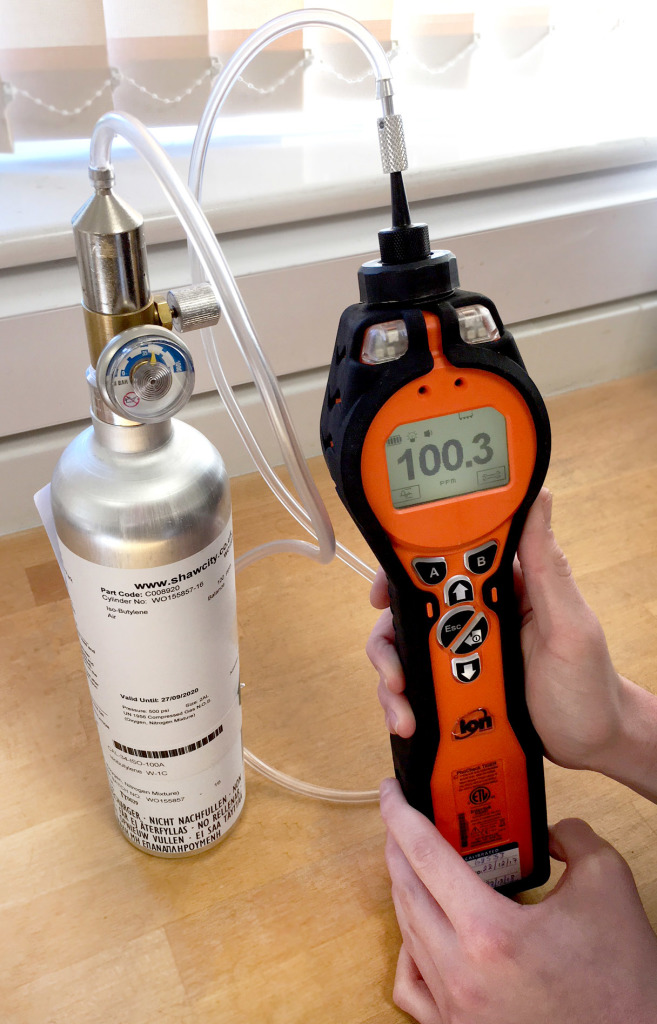No Excuses, Bump It
17 Jun 2018
Today’s gas detection technology offers better protection than ever before but one often-overlooked issue in the industry is the regular bump testing of instruments and, crucially, how many users are unaware of the importance of this simple procedure or unsure how to do it.
In simple terms, the usual recommendation is that gas detection instruments are serviced and calibrated at least once a year, depending on the technology and the manufacturer. However, it is less well known that ATEX, IEC and British HSE standards all call for the bump test and calibration of any portable instrument used for worker health and safety protection in a potentially hazardous environment. That means before every use. The bump test is a quick check to ensure the instrument’s sensors and alarms are all functioning correctly before deploying the instrument. Just because a sensor is giving a zero reading, it doesn’t necessarily mean that the sensor is working properly.
The analogy one could use is a car which has been serviced and has passed its MOT. Although the recommended annual checks have been done there are numerous reasons why, through day-to-day use, the vehicle might become unsafe to drive before the next service, due to unpredictable wear and tear or damage.
Many environmental conditions can degrade sensor response. LEL sensors can be inhibited or poisoned by silicon compounds (some lubricants), sulphur compounds (e.g., H2S), lead (Pb) compounds, acids and compounds that generate acids on combustion, like chlorinated hydrocarbons.
Electrochemical sensors are affected by high levels of organic vapours and corrosive gases. PID lamps can lose output by a) simple aging b) becoming coated when exposed to excessive dust, high-boiling compounds, phosphine, organic amines or silazanes or c) by contact with liquids.
Sensors will also lose response if the sample gas does not adequately reach it because of leaks in the sample train or contamination of the inlet dust filters. Other elements which can affect performance include heavy knocks or drops, damage, frequent exposure to extreme temperatures, humidity and high particulate levels. All of these factors illustrate why bump testing and calibration checks are necessary to regularly monitor performance and accuracy.
The ISEA (International Safety Equipment Association) and ATEX recommend the following general procedure:
1a) A daily “Bump Test” before the instrument is put into use. Gas is applied just long enough to make the sensor(s) alarm, to ensure that the gas is getting to the sensor and that both the sensor and alarm are working.
or
1b) A daily Calibration Check before the instrument is put into use. Calibration gas is applied to the sensor to see if it responds within predefined error limits, typically within 10-20% of the expected value, as set by manufacturer’s recommendation or user’s company policy.
In critical cases where a permit to work is given as a result of a gas test, ATEX recommends that a bump test or calibration check also be conducted at the end of the day’s use to ensure that the instrument was functioning properly throughout the entire monitoring period.
2) Full Calibration if either the bump test or calibration check fail. A full calibration should also be conducted at regular intervals as recommended by the manufacturer, user’s company policy, or regulatory agency.
Shawcity’s Managing Director Neil O’Regan is Chair of the BSIF Measurement and Instrumentation Special Interest Group, a collective with members representing various manufacturers and distributors. The group’s current focus is a ‘No Excuses, Bump It’ campaign, with the aim of educating the industry on how to effectively maintain instruments and answer FAQs on bump testing and calibration.
Neil commented: ‘Shawcity has been at the heart of gas detection and monitoring in the UK for over forty years and one of the key issues we consistently urge our customers and the wider industry to consider is the vital importance of bump testing and calibrating any gas detection instrument to ensure their accuracy is tested regularly.
‘Our BSIF SIG will shortly be publishing guidelines to help with the understanding of this simple yet essential test. Everyone should have absolute confidence that any instrument on which somebody’s life could depend should be fully functioning, each and every time it is used.’
For more information contact the team via email: [email protected] or call 01367 899565
Shawcity Limited
Website
T: 0136 789 9553
91-92 Shrivenham Hundred Business Park
SN6 8TY
Swindon, Oxfordshire
United Kingdom

Product News
Shawcity Wins OHD International Distributor of the Year
Shawcity is delighted to announce that they have been awarded International Distributor of the Year 2018 by OHD LLLP, manufacturers of the Quantifit fit testing system.

Product News
In the Spotlight with Neil O'Regan
In the spotlight with Shawcity's Managing Director Neil O'Regan for HSM Magazine.
List your business for free
Create a business listing on the SHP directory
Advertise with us
Download our media pack, and find out how we can meet your needs with a range of pricing options.



